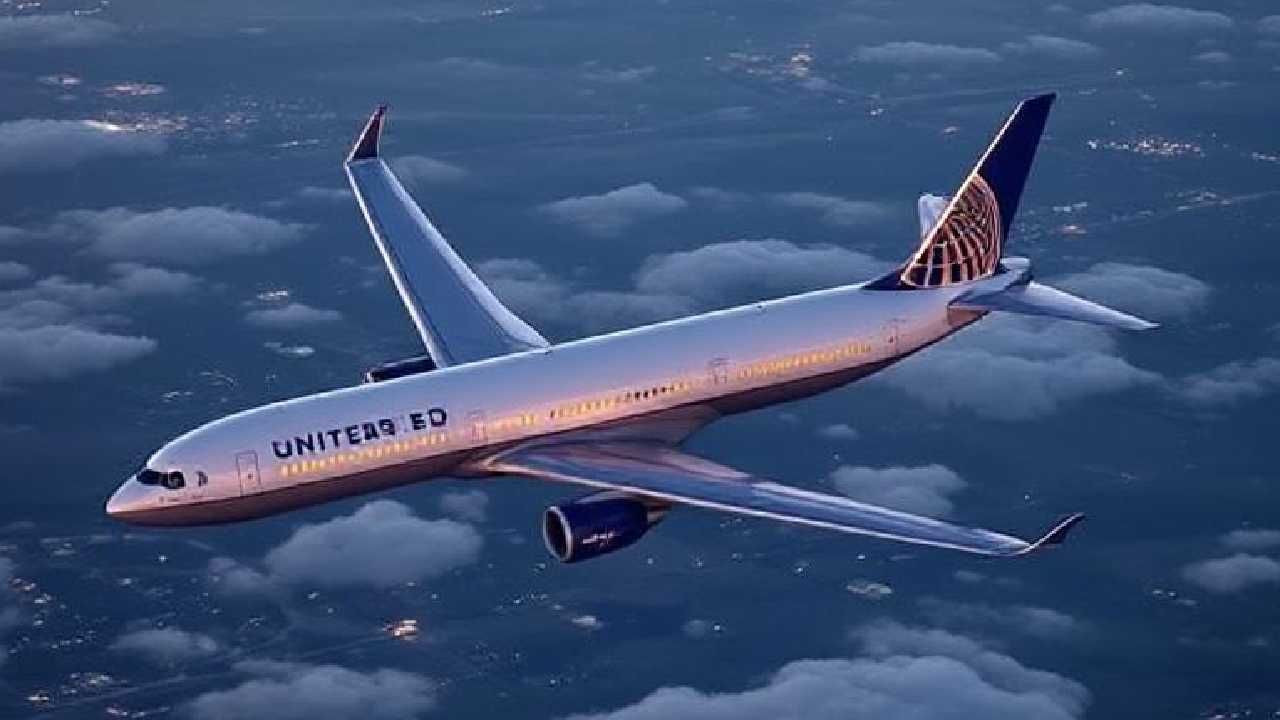When air travel takes an unexpected turn, it grabs everyone’s attention. That’s exactly what happened with the United Airlines Flight UA770 emergency diversion, a headline that stirred both concern and curiosity. But what really caused this sudden change of course? What did passengers experience? And how does United Airlines handle such situations?
This article breaks it all down. From the incident details to industry-standard responses, we unpack everything you need to know about the emergency diversion of United Airlines Flight UA770.
Incident Recap: The Timeline of United Airlines Flight UA770 Emergency Diversion
On a routine journey, United Airlines Flight UA770 suddenly diverted from its scheduled route, triggering emergency protocols. According to early reports, the flight, originally bound for a West Coast destination, was forced to land unexpectedly due to a potential technical malfunction.
Eyewitnesses on board described a sudden shift in cabin mood. Flight attendants moved quickly and calmly. Pilots communicated clearly with passengers, informing them of a safe but necessary diversion. Within minutes, the aircraft was rerouted and safely landed at an alternate airport.
The airline cited precautionary measures as the main reason for the diversion, with the safety of passengers and crew as the top priority. It’s a reminder that even in unexpected circumstances, aviation professionals are trained to act fast and ensure everyone remains safe.
How United Airlines Handles Mid-Flight Emergencies
United Airlines, like all major carriers, follows strict emergency protocols designed by the Federal Aviation Administration (FAA). These procedures cover every conceivable event — from engine anomalies to sudden medical emergencies.
During the United Airlines Flight UA770 emergency diversion, these protocols kicked into action. Pilots consulted in-flight diagnostics and communicated with air traffic control. A diversion decision wasn’t taken lightly. United’s operations control team coordinated the emergency landing, ensuring ground support was ready before the plane touched down.
Cabin crew members remained composed, guiding passengers with clear instructions. It’s a real-world example of how airline staff are trained not only for customer service but also for critical, life-saving scenarios.
Common Reasons Behind In-Flight Diversions
In-flight diversions, while rare, are not unheard of. Several reasons may trigger such decisions:
- Mechanical issues: Sensor errors, engine alerts, or landing gear faults.
- Medical emergencies: A sudden illness of a passenger or crew.
- Weather conditions: Severe turbulence, lightning, or low visibility near the destination.
- Security threats: Suspicious behavior or unclaimed items.
In the case of United Airlines Flight UA770 emergency diversion, early indicators suggested a technical issue—possibly a sensor alert—that prompted the crew to act with caution. These precautions often prevent minor problems from escalating.
Passenger Reactions and Onboard Experience
Passengers aboard Flight UA770 shared varied accounts on social media. Many praised the airline for keeping them informed throughout the diversion process. Some noted the nervous atmosphere, while others commented on the professionalism of the flight crew.
For travelers, a diversion may bring anxiety, delays, and confusion. However, consistent communication — something United Airlines managed well in this case — plays a major role in maintaining order and trust.
One passenger wrote, “It was scary at first, but the crew stayed calm, and we felt safe. They kept telling us what was happening, which helped a lot.”
Behind the Scenes: What Happens After a Diversion
Once a plane like UA770 diverts, the story doesn’t end with landing. Ground crews inspect the aircraft. Engineers assess any damage or potential risks. At the same time, airline staff arrange new flight options or accommodations for affected passengers.
United Airlines has a crisis response team ready to swing into action. This team handles:
- Aircraft diagnostics and repairs
- Passenger rebooking and support
- Media and public communication
- FAA and internal incident reporting
Flight UA770’s diversion triggered this chain reaction — and United’s ability to respond quickly helped minimize disruption.
What the FAA and NTSB Look for Post-Incident
Following any emergency diversion, regulatory bodies such as the FAA (Federal Aviation Administration) and NTSB (National Transportation Safety Board) conduct standard reviews. These investigations aren’t always due to suspicion — they’re part of aviation safety culture.
For United Airlines Flight UA770 emergency diversion, the FAA would review flight logs, cockpit voice recordings, and maintenance records. If needed, the NTSB might assist in evaluating systemic patterns or manufacturer faults.
These evaluations help airlines and aircraft manufacturers make improvements and ensure future safety.
How Airlines Train Crews for In-Flight Emergencies
Flight crews undergo intensive, recurring training for emergency scenarios. From smoke in the cabin to sudden decompression or unruly passengers, they learn how to react quickly and efficiently.
For example, pilots use simulators to practice diversions under different conditions. Cabin crew attend hands-on emergency evacuation drills and medical response workshops.
During the United Airlines Flight UA770 emergency diversion, this training played a pivotal role in ensuring a safe outcome. The response wasn’t improvised — it was the result of years of preparation and protocol compliance.
Technical Redundancies: The Hidden Safety Net of Commercial Jets
Modern aircraft are engineered with multiple redundancies. That means backup systems exist for nearly every flight-critical component. If one sensor fails, another takes over. If one hydraulic system malfunctions, others provide support.
These safeguards make diversions, like the one on UA770, a controlled procedure rather than a panic-filled event. Pilots aren’t just responding to alarms—they’re managing options, weighing fuel levels, weather conditions, and airport availability before deciding.
It’s not just about quick thinking; it’s about informed decisions backed by data and design.
The Role of ATC During Emergency Diversions
Air Traffic Control (ATC) serves as the guardian angel of airspace. When pilots call in an emergency, ATC clears the airways, reroutes nearby traffic, and prepares runways for emergency landings.
In UA770’s case, ATC provided immediate support, identifying the closest suitable airport, clearing approach paths, and alerting ground emergency services. Without this coordination, diversions could become chaotic.
The teamwork between cockpit and ATC is seamless — and absolutely essential for flight safety.
How Diversions Affect Airline Operations and Schedules
An emergency diversion disrupts more than one flight. It ripples through the airline’s entire schedule. Aircraft positioning changes, crew hours get adjusted, and downstream flights may face delays.
United Airlines quickly reassigns aircraft and reschedules connections to minimize impact. For passengers, this might mean longer waits, rebookings, or overnight stays — but it also ensures that no safety corners are cut.
In UA770’s case, the airline provided accommodation and meal vouchers for passengers who faced onward travel delays.
Lessons from United Airlines Flight UA770 Emergency Diversion
The diversion of United Airlines Flight UA770 serves as a case study in aviation professionalism. It highlighted how well-trained crews, reliable aircraft systems, and real-time ground coordination can turn a potential disaster into a calm and safe landing.
While no one wants to experience an emergency diversion, knowing what to expect — and seeing how airlines respond — can give travelers peace of mind. Safety remains the cornerstone of modern aviation.
Conclusion
The United Airlines Flight UA770 emergency diversion showed how today’s aviation systems work together to keep passengers safe, even when things don’t go as planned. With timely decisions, effective communication, and expert coordination, the situation was handled professionally and efficiently. If you’re ever on a flight that diverts, rest assured — the system is built to protect you.
UA770 diverted due to a reported technical alert. The crew followed safety protocols and rerouted the flight as a precautionary measure.
No injuries were reported. All passengers and crew members disembarked safely.
The airline inspects the aircraft, assists passengers with new travel plans, and files incident reports with aviation authorities.
Compensation depends on the cause. If the diversion was preventable or due to a delay, passengers might be eligible for vouchers or refunds.
Not always. Many diversions are precautionary, meant to ensure safety before small issues become big problems.
Certified engineers inspect flight data, sensors, and mechanical systems before clearing the aircraft for future use.
Stay calm, listen to crew instructions, and follow the airline’s directions after landing for rebooking or assistance.










